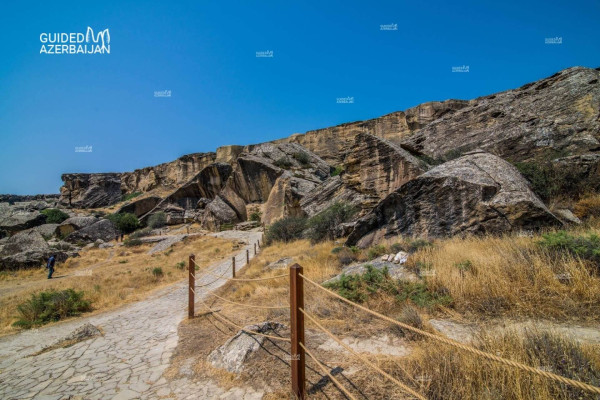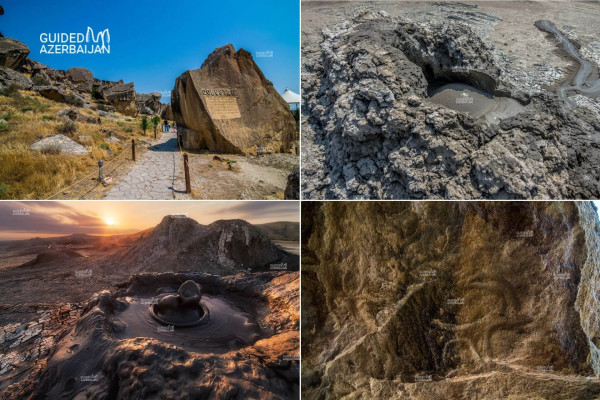Gobustan UNESCO World Heritage
Gobustan National Park is a UNESCO World Heritage site located just outside Baku, Azerbaijan, known for its exceptional historical, archaeological, and geological significance. The park is home to two of the country’s most remarkable features: the Gobustan Petroglyphs and the Mud Volcanoes, which together offer a fascinating glimpse into the region’s ancient past and natural wonders.
The Gobustan Petroglyphs are an extraordinary collection of ancient rock carvings that date back between 5,000 to 40,000 years. These petroglyphs depict scenes of early human life, including hunting, rituals, and daily activities. Animals such as wild goats, bulls, and horses are frequently featured, as well as images of humans engaged in ceremonial practices. The carvings are etched into the rocky surfaces of the Gobustan hills, forming an open-air museum of prehistoric art. This site is considered one of the largest and best-preserved petroglyph collections in the world, providing invaluable insight into early human cultures. As part of the Gobustan Archaeological Reserve, these petroglyphs hold global cultural importance, which led to the area’s designation as a UNESCO World Heritage Site in 2007.
Gobustan is also famous for its mud volcanoes, with Azerbaijan being home to over half of the world’s mud volcanoes, many of which are located in this region. These volcanoes expel mud, gas, and minerals, creating a unique and surreal landscape. The mud is believed to have therapeutic properties, and locals have long used it for medicinal purposes. The mud volcanoes are still active, regularly emitting mud and gas, and their ever-changing activity makes the landscape feel dynamic and alive. The area’s rugged terrain, combined with these volcanic features, offers visitors a stunning and otherworldly experience, contributing to the park’s geological significance.
In addition to the petroglyphs and mud volcanoes, the Gobustan Rock Formations are another striking feature of the park. These weathered, sculpted rocks, shaped over millennia by wind and rain, add to the beauty of the landscape. The formations create dramatic natural structures and provide a unique backdrop for the petroglyphs, further enhancing the area’s visual appeal.
For those interested in learning more about the historical and cultural context of the park, the Gobustan Museum offers detailed exhibits on the petroglyphs, mud volcanoes, and archaeological discoveries in the region. The museum helps visitors understand the significance of the Gobustan sites, providing a deeper connection to the area’s rich history and cultural heritage.
Together, the Gobustan Petroglyphs, Mud Volcanoes, and Gobustan Archaeological Reserve form a UNESCO World Heritage site that offers a rare combination of natural beauty, ancient art, and geological wonders. It’s a remarkable destination for those interested in both history and nature, showcasing Azerbaijan’s rich cultural and geological legacy.







Please make sure your contact details, email, country code & number is correct